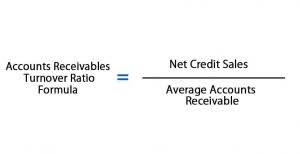
Product or manufacturing cost is the total cost incurred in producing goods. It encompasses the cost of direct materials, labor, and manufacturing overhead. Product cost is crucial for determining the cost of individual products and evaluating their profitability.

The cost of goods manufactured formula

Robust MRP systems can track production costs both per period, per project, or per product, making them suitable for both job shops as well as make-to-stock manufacturers. Scaling production requires careful evaluation, as not all production costs scale simultaneously. Understanding these nuances allows us to effectively plan and allocate resources to support our growth and profitability goals.
How to Calculate Total Manufacturing Cost: A Simple Guide
- First, having a complete understanding of these costs makes it easier to benchmark them and determine which ones can be reduced.
- Indirect material costs include items such as containers or pallets used to store raw materials safely.
- You can calculate manufacturing overhead by adding up all manufacturing overhead expenses.
- Utilize technologies like supply chain analytics and forecasting tools to make informed decisions and improve overall efficiency.
- Production costs are all the expenses related to a manufacturer conducting its business.
- A comprehensive exploration of total manufacturing cost unlocks opportunities to maximize profitability.
COGM also allows management to identify cash drains, adjust prices, and track the development of the business. Work with finance for depreciation numbers and the cost of utilities, insurance and rent or property taxes. Direct labor is the cost of the time of the people that perform value-adding work on a product. This includes machine loading and unloading but excludes inspection and supervision.

How COGS work in manufacturing
- Machine hours measure how much machine time is used for production, while labor hours focus on the time employees spend in production.
- This includes equipment depreciation, utilities and property taxes or rent.
- Separately, obtain the number of direct hours worked in the period under review.
- Subsequently, this total is adjusted by subtracting the steel inventory value at the period’s end.
- By using the total manufacturing cost formula, you can monitor material, labor, and overhead costs effectively.
Finally, allocate overhead, which includes contribution margin expenses like utilities, equipment maintenance, and factory rent. Total manufacturing cost refers to the total expenses involved in producing goods. Accurately calculating total manufacturing costs is essential for determining product pricing, managing resources, and maximizing profitability.
Use the Total Manufacturing Cost Formula
The cost of raw materials can fluctuate based on the amount of material purchased and the current price of the materials at the time of purchase. The price of these materials may also include shipping costs, so buying in bulk can be a way to https://www.facebook.com/BooksTimeInc cut down on expenses. Taking a look at the total manufacturing cost is insightful for making your manufacturing company more cost-effective. While it is predominantly an accounting term, its utility can go far beyond balancing the books. Namely, TMC can shed light on areas in the production process that need optimization. The Cost of Goods Sold or COGS is the cost of only the finished products that were sold during a given period.
- Calculating the total manufacturing cost requires a thorough understanding of all expenses related to manufacturing, both direct and indirect.
- As for overhead, you pay for regular equipment maintenance and upgrades as well as utilities and insurance for $7,000 per month.
- Understanding total manufacturing costs is an important step for those who want to improve manufacturing productivity.
- This may vary by personnel grade and length of service, so for highest accuracy, obtain actual numbers for each of the direct employees.
- To calculate manufacturing overhead, add all of the indirect factory-related expenses incurred during the production of a product.
Direct Materials
After choosing an allocation method, divide the total overhead costs across your products based on machine hours or labor hours. For example, if your factory’s overhead costs are $10,000 and your machines run for 1,000 hours, you would allocate $10 in overhead per machine hour. This allocation ensures that overhead is fairly distributed among products, giving you a more accurate picture of total manufacturing costs. Indirect costs are not directly related to manufacturing and, therefore, generally remain the same period over period.
Keep Your Business Afloat With These Budgeting Methods

Equally, if prices are too low, you won’t be generating the required revenue to make your business profitable. If your findings in this area aren’t favourable, you can at least use the data as fuel to remedy the situation. This information will dictate key decisions around your company’s direction, such as total manufacturing cost formula whether to be cautious or bold (and therefore whether to make cuts or to invest in core functions).